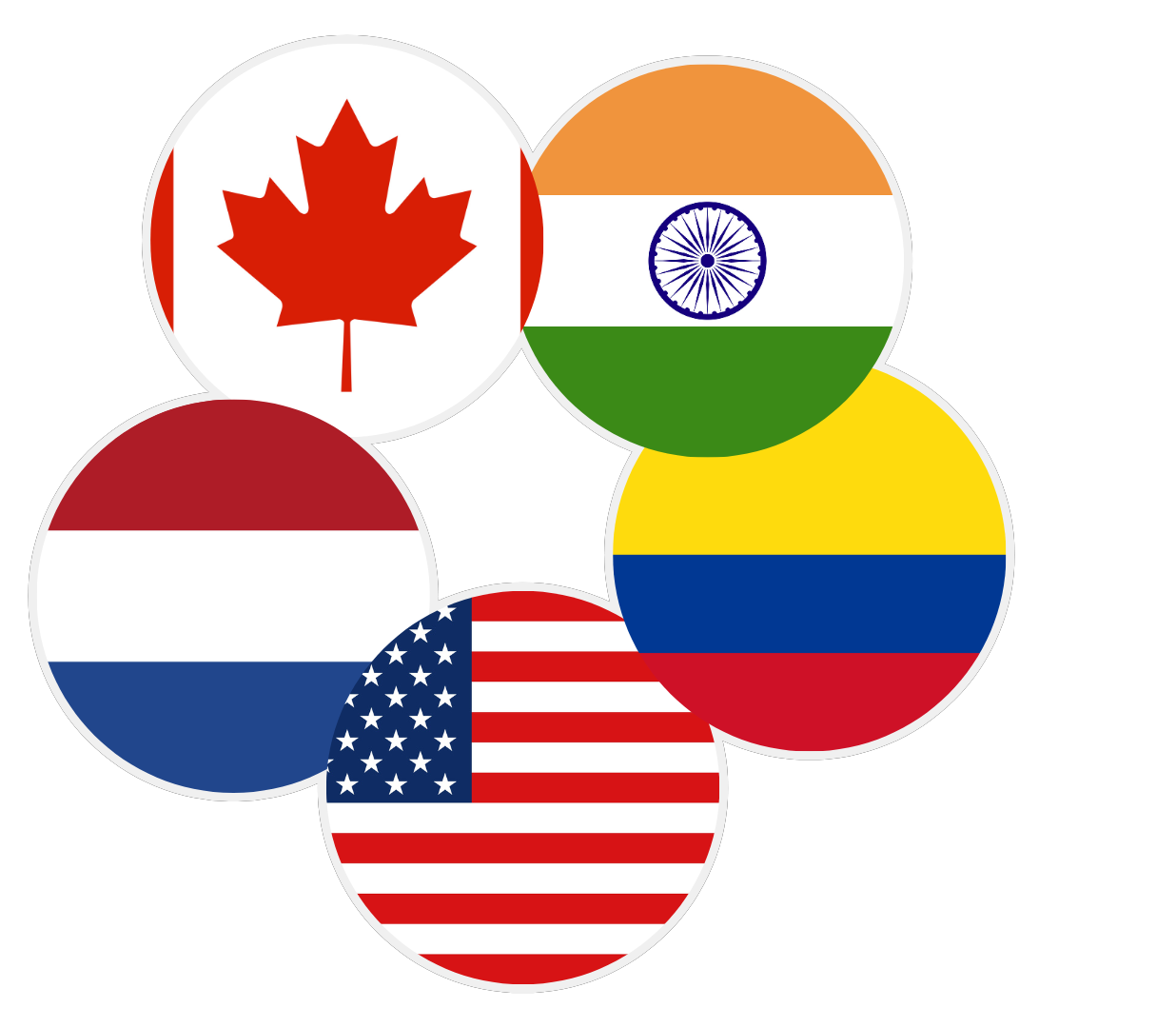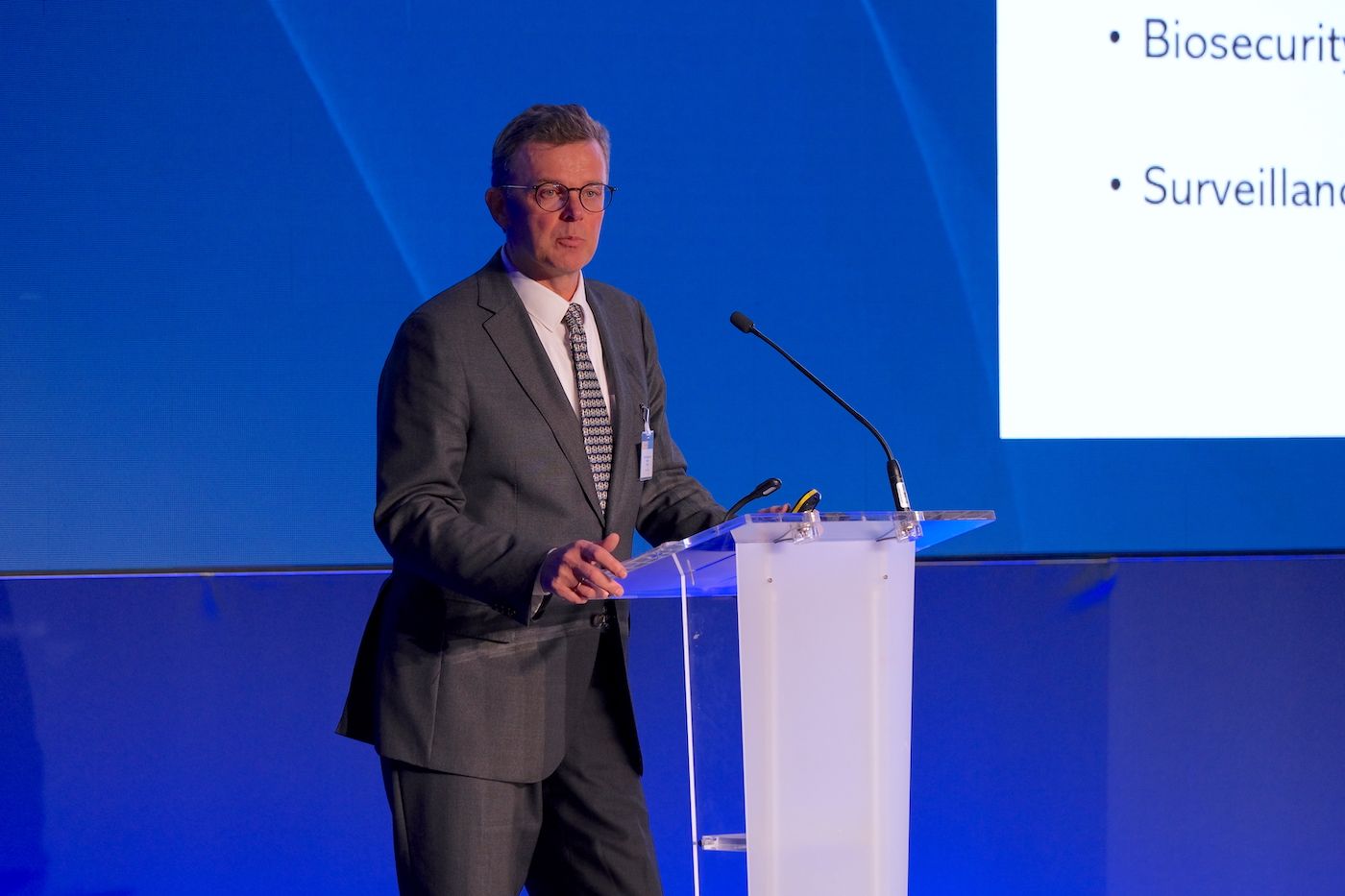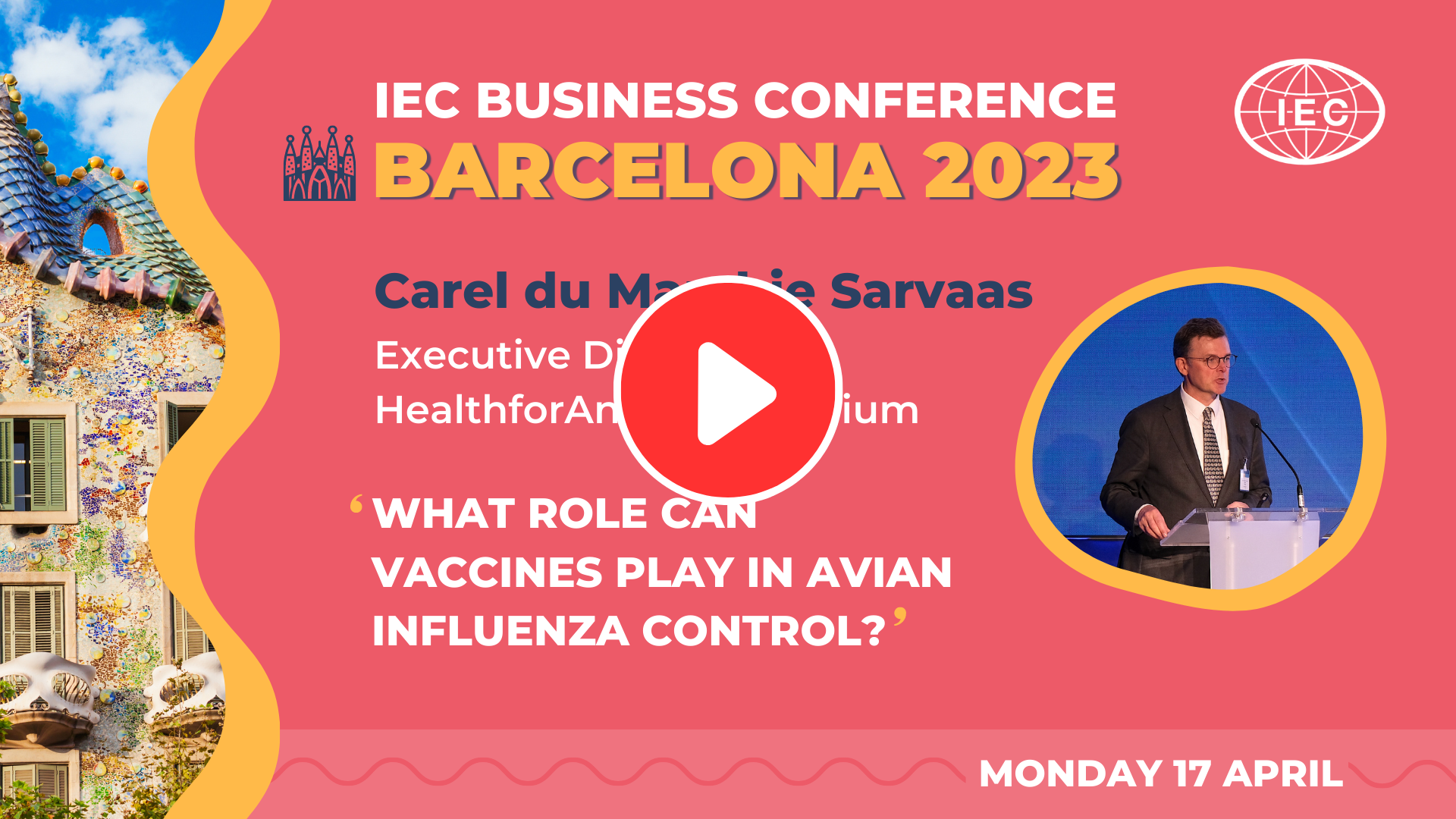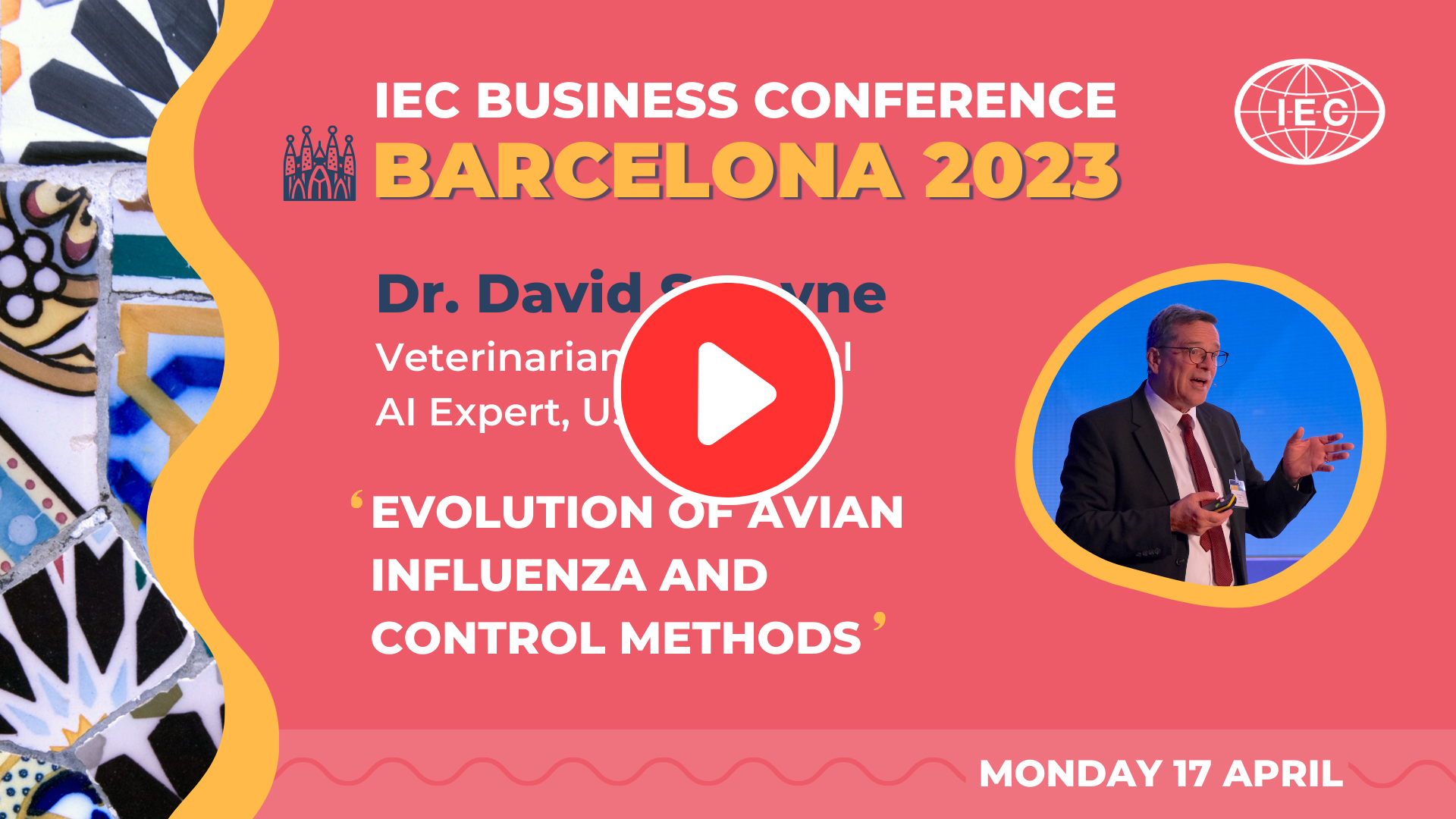Global Updates and Crucial Next Steps in the Fight Against HPAI
27 June 2023
High Pathogenicity Avian influenza (HPAI) is a top-of-mind issue affecting egg businesses and wider markets across the world. Providing the perfect opportunity for knowledge-sharing and global updates, the IEC Business Conference in Barcelona opened with industry experts exploring this hot topic and how we collectively overcome the challenges AI raises.
 Avian Influenza – what’s happening around the world?
Avian Influenza – what’s happening around the world?
Providing important context to discussions, the sessions began with regional updates on the current AI situation from 5 country representatives. Visit the link below to explore these member-only updates now.
Evolution of Avian Influenza and Control Methods
For the next part of the session, Dr David Swayne, Veterinarian and Global AI Expert, discussed the evolution of AI and control methods, from a scientific perspective.
 Dr Swayne explained that AI is a small virus with the capability to continually change and mutate, picking the best gene segments between different AI viruses to adapt with. He added that AI viruses can widely differ in their biology: “We categorise AI into two different groups – low pathogenicity, or mild disease causing viruses, and high pathogenicity ones, which cause the really bad deadly diseases.”
Dr Swayne explained that AI is a small virus with the capability to continually change and mutate, picking the best gene segments between different AI viruses to adapt with. He added that AI viruses can widely differ in their biology: “We categorise AI into two different groups – low pathogenicity, or mild disease causing viruses, and high pathogenicity ones, which cause the really bad deadly diseases.”
Some low pathogenicity viruses (H5s and H7s) will mutate into high pathogenicity avian influenza (HPAI) viruses. These viruses can infect a variety of poultry and wild birds, depending on the individual virus strain, Dr Swayne stated.
What’s different about this current virus?
With the current strain of HPAI (H5N1) having such devastating effects across the global industry, Dr Swayne outlined key differences in this virus’s lineage compared to previous strains.
He explained that what makes this virus unique is its ability to interact between domestic ducks and terrestrial poultry: “On the agricultural side, our ‘Achilles heel’ is domestic ducks. They’re the most susceptible of all of our poultry species to this HPAI virus.” This is due to domestic ducks being a “great host for the virus”, as they are highly infective and largely asymptomatic.
How much virus does it take to produce an infection in poultry?
The expert speaker explained that 1g of faeces contains around 10 million virus particles, and 1g of saliva in respiratory secretions contains around 100 million virus particles: “It makes you understand that biosecurity is so critical at keeping out just the little bit that you might track in on a shoe.”
To demonstrate likelihood of infection from these quantities, he added: “In small outbreaks where the virus only had limited spread, we found that it takes between 1,000 and 50,000 particles to get an infection in a chicken. If we looked at big outbreaks, it takes from as little as 16 to about 1,000 virus particles.”
How do we fight this virus?
“Each farm should have a comprehensive biosecurity plan that’s written down, and educated to all the farm workers,” stated Dr Swayne. “And that plans needs to be audited to make sure you find all the weak links and make corrections, so you’ll keep the flock at its best and the lowest risk for introduction.”
The expert identified a key difference in the ‘line of separation’ with the current virus, discussing how previously the biosecurity at farm gate would keep it out, whereas now, because it’s also spread by wild birds, the gate is not adequate enough. Instead, the biosecurity must go up to the barn door, since wild birds can enter and contaminate the environment anywhere on the farm.
Despite recognising the value in such measures, Dr Swayne also acknowledged that “biosecurity reduces the risk, but doesn’t eliminate it”, demonstrated by the continued spread of the disease even with better programmes in place.
Further to this, he identified a number of challenges associated with ‘stamping out’ the disease, including the increasing expense of such programmes; animal welfare concerns; and the reactive nature of this approach, meaning it often spreads to the next flock before you’re able to take action.
Discussing outbreaks of the most recent virus, Dr Swayne said: “Some countries could not get ahead of the disease and stamping out was not effective at elimination. The virus became endemic and, as a result, many of those countries implemented vaccination.”
What can vaccination do?
With vaccination being explored globally as an additional tool to combat AI, Dr Swayne provided insights into the scientific purpose and effect of vaccination. He explained that vaccination increases the resistance to AI infection, so that the virus will not replicate in an immune flock. He added that some vaccinated birds may occasionally become infected, but they produce significantly less virus, preventing disease and death.
He summarised: “What this really means in the big picture is, there’s reduced environmental contamination, reduced transmission within that premises, and reduced spread between barns and farms – which leads to maintenance of the livelihoods of growers and food security of consumers, and improves animal welfare.”
What Role Can Vaccines Play in Avian Influenza Control?
Following Dr Swayne’s scientific insights, Carel du Marchie Sarvaas from Health for Animals further explored the role of vaccines and the steps needed to add them to our AI control toolkit.
 He opened by providing an update on the current use of vaccines around the world: “Vaccination has been happening in many different markets – there are preventative vaccines for when you don’t have an outbreak yet, and there are emergency vaccines for when you have an outbreak.” He added that, at this time, the most common methods of control continue to be biosecurity and surveillance.
He opened by providing an update on the current use of vaccines around the world: “Vaccination has been happening in many different markets – there are preventative vaccines for when you don’t have an outbreak yet, and there are emergency vaccines for when you have an outbreak.” He added that, at this time, the most common methods of control continue to be biosecurity and surveillance.
Carel then discussed the likely steps needed for wider implementation globally, including: vaccine trials and approval processes, a vaccination strategy, surveillance systems, financing, and political agreements. “It’s a complex road”, he said “And all of these are going on in one way or another in different countries.”
The expert also explored the parameters for vaccination which need to be assessed, for example, level of shedding of the virus, period of immunity, identifying infected and non-infected birds, and route of administration: “There are all kinds of different aspects that need to be taken into account.”
Looking to the future
Carel concluded by presenting an outlook for the future of AI vaccination: “It’s not the vaccine producers who decide whether there should be vaccination or not, that’s governments. And governments do this in consultation with different entities. First and foremost, of course, the poultry and egg industry. But I think as the situation evolves, other societal players are coming into scope where governments have discussions with them.”
Please note: the information quoted in this article was accurate at the time of presentations (15 April 2023).
Are you an IEC Member?
Unlock the complete speaker insights by watching their full presentations now:
Committed to supporting our global community
The IEC’s Avian Influenza Global Expert Group continue to work towards preventative measures to support the global egg industry in the fight against AI.
Explore our latest tools and resources now
